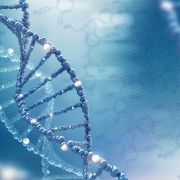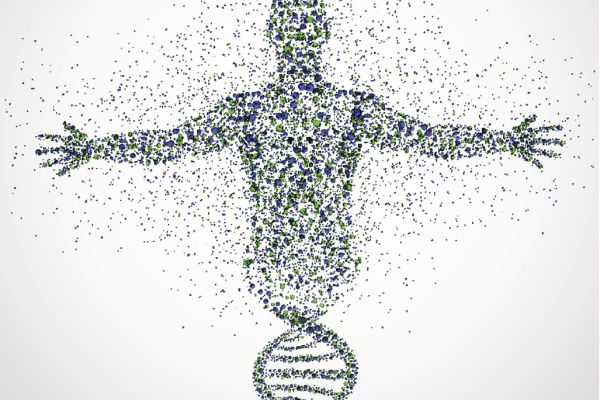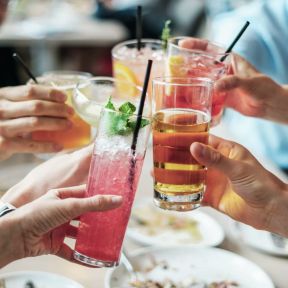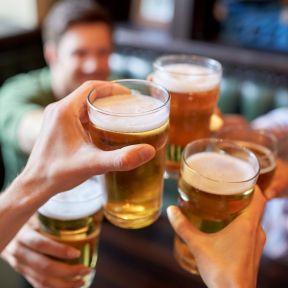
Alcoholism
For many, beer, wine, and spirits conjure up thoughts of social gatherings and tipsy fun. But alcohol is a nervous system depressant and easily alters behavior, culminating in some cases in the emotional pain and physical disintegration of alcohol addiction, colloquially known as alcoholism. Experts continue to debate the benefits and risks of drinking and passionately argue over whether moderation or complete abstinence is the best option for those who struggle with alcoholism.
Alcohol Use Disorder is a pattern of disordered drinking that leads to significant distress. It can involve withdrawal symptoms, disruption of daily tasks, discord in relationships, and risky decisions that place oneself or others in danger. About 15 million American adults and 400,000 adolescents suffer from alcohol use disorder, according to the National Institute on Alcohol Abuse and Alcoholism. But treatment and support are available to help those suffering begin to heal.
For more information on symptoms, causes, and treatment of alcohol use disorder see our Diagnosis Dictionary.
Contents

Alcoholism most often refers to alcohol use disorder—a problematic pattern of drinking that leads to impairment or distress—which can be characterized as mild, moderate, or severe based on the number of symptoms a patient has, such as failing to fulfill obligations or developing a tolerance. Mild is classified as 2 to 3 symptoms, moderate is classified as 4 to 5 symptoms, and severe is classified as 6 or more symptoms, according to the DSM-5.
Alcohol use disorder is a problematic pattern of alcohol use that leads to distress in one’s daily life, according to the DSM-5. The symptoms that can lead to a diagnosis include drinking more alcohol than intended, failing to cut back on alcohol use, devoting substantial time and effort to drinking and recovering from drinking, strong cravings for alcohol, failing to fulfill obligations at work, school, or home, disengaging from relationships and activities, and developing tolerance or withdrawal, among others. Experiencing at least two symptoms throughout the course of a year merits a diagnosis, from mild to moderate to severe.
The later stages of addiction can yield physical changes, but behavioral signs can help detect it early on. People with an addiction often develop rigid routines that revolve around uninterrupted access to alcohol and other drugs; they may be irritated by schedule changes and blame their frustration on others. They may have powerful mood swings that seem to change their personality. Relationships may deteriorate, as their social circle narrows to other drug or alcohol users. Their work may decline as well, and they may lose a spiritual or religious practice they once valued.
If the drinking world is conceptualized as a spectrum, normal social drinking is one on end (a few drinks per month, almost always in a social context) and alcohol use disorder is on the other end. But there’s a large gray area in the middle, in which drinking can cause problems for someone’s health, job, or loved ones, but not to a clinical extent. An example would be a father who falls asleep on the couch after having several drinks three or four days a week, missing out on time with his kids and wife. Another would be a college student who repeatedly has trouble making it to class because she was drunk the night before. These individuals, sometimes called “almost alcoholics,” may not see the connection at first but would often benefit from help and support.
Alcohol use disorder affects millions of people, but it often goes undetected. Substance use frequently co-occurs with mental illness, but some research suggests that psychiatrists only treat addiction for around half of the patients who have both mental illness and substance use problems. This discrepancy highlights the obstacles in addiction care, such as that clinicians may be unaware of the signs of substance use or not want to alienate patients by bringing it up, and patients may not want to reveal their substance use, among other hurdles.

Like all addictions, alcohol use disorder is linked to a complex combination of biological, social, and psychological factors. Research highlights a genetic component to the disorder, as about half of one's predisposition to alcoholism can be attributed to genetic makeup. People may turn to alcohol as a way to cope with trauma or other, often unrecognized psychological disorders. Socially, alcoholism may be tied to family dysfunction or a culture of drinking.
Before it becomes problematic, why do people turn to alcohol in the first place? A number of factors can motivate people to drink. One is simply its rewarding consequences, such as having fun or escaping social anxiety. Having an impulsive personality plays into the decision to seek rewards despite negative repercussions. Another factor is stress, because alcohol can alleviate distressing emotions. Social norms, such as drinking during a happy hour or on a college campus, and positive experiences with alcohol in the past (as opposed to getting nauseous or flushed) play a role as well.
The chance of developing any health problem is related to the genetic code we are born with. Just like some people have a greater risk of developing cardiovascular disease or cancer, others have a greater risk of developing an alcohol use disorder. Someone with a family history of alcohol problems, someone prone to anxiety or depression, someone who is highly impulsive and takes risks, and someone who needs more alcohol than average to experience its effects has a higher likelihood of developing the disorder.
Childhood trauma can fuel problematic drinking in adulthood, because the person might use alcohol to cope with feelings of anger, depression, anxiety, loneliness, or grief. Compared to people without a drinking problem, men and women who sought treatment for alcohol addiction had a higher prevalence of childhood trauma, research finds. Furthermore, the greater the abuse or neglect experienced, the more severe their drinking problem was. Therapy can help people who suffered as a child to address those challenges and develop healthier coping skills.
Alcohol is a powerful substance, with the capacity for positive experiences, such as bursts of creativity and fun, as well as harmful repercussions, such as addiction and health problems. Becoming dependent on alcohol can lead to challenges for both the mind and the body.
Heavy drinking can fuel changes in the brain—about half of people who meet the criteria for alcoholism show problems with thinking or memory, research suggests. The ability to plan ahead, learn and hold information (like a phone number or shopping list), withhold responses as needed, and work with spatial information (such as using a map) can be affected. Brain structures can shift as well, particularly in the frontal lobes, which are key for planning, making decisions, and regulating emotions. But many people in recovery show improvements in memory and concentration, even within the first month of sobriety.
The idea that altered forms of consciousness such as mania or alcohol can enhance creativity is a popular belief. And it turns out there’s some evidence for that idea. Researchers found that participants who had a few drinks were better and faster at creative problem solving than their sober counterparts. The reason may be that alcohol tamps down working memory and therefore sparks people to think outside the box.
As anyone who has had even a glass of wine can attest, alcohol can have a noticeable influence on mood. Drinking releases endorphins which can lead people to feel happy, energized, and excited. But alcohol is also classified as a depressant and can cause fatigue, restlessness, and depression. It may shift from stimulant to sedative in line with whether blood alcohol content is rising or falling. Given the power of alcohol on the brain, people who drink heavily may come to rely on it to regulate their mood.
One recent analysis found a sobering relationship between alcohol and health. People who drank seven to 14 alcoholic drinks a week lowered their life expectancy by about six months, people who drank 14 to 24 drinks a week lowered their life expectancy by one to two years, and consuming more than 24 drinks a week lowered life expectancy by four to five years. Alcohol consumption was also linked to a greater risk for stroke, coronary disease, heart failure, and fatally high blood pressure. However, it’s difficult to discern if drinking was the primary problem, or whether lifestyle choices such as diet and exercise influenced health outcomes as well.

In some cases, the first step in treating alcohol use disorder is detoxification—experiencing withdrawal in a safe setting with medical professionals. Following withdrawal, there are many paths to recovery.
Some people are able to stop drinking on their own. There are many organized programs that provide the support of peers, usually through frequent meetings. Alcoholics Anonymous is one example; it offers a structured 12-step path toward recovery with a community of support from those who have dealt with similar challenges.
Cognitive behavioral therapy is another path, available in person or online. Non-abstinence-based recovery models—such as Moderation Management—advocate for reducing one's alcohol consumption rather than abstaining completely.
The biggest barrier to therapy of any kind that patients may face is shame and stigma; most programs address such concerns directly.
Some people prefer to try cutting back or quitting on their own before committing time and money to rehab. And there are a few approaches that can identify and combat drinking at an early stage. People can focus on education and support, such as through Alcoholics Anonymous, or take on a sobriety challenge. People can learn mindfulness; rather than trying to soothe uncomfortable feelings with alcohol, mindfulness encourages techniques such as breathing, visualization, and meditation.
In a clinical setting, motivational interviewing, which cultivates the drive to change behaviors, and Screening, Brief Intervention, Referral, and Treatment (SBIRT), which funnels patients to treatment, are also helpful options.
A few empirically validated practices can help identify strong treatment programs. Treatment centers should ideally have rigorous and reliable screening for substance use disorders and related conditions. They should have an integrated treatment approach that addresses other mental and physical health conditions. They should emphasize linking different phases of care, such as connecting patients to mental health professionals, housing, and peer support groups when transitioning out of the acute phase of care. They should also have proactive strategies to avoid dropping out, involve the family in treatment, employ qualified and certified staff, and be accredited by an external regulatory organization.
Find a treatment center using the Psychology Today Therapy Directory.
Alcoholics Anonymous is a decades-old treatment, but one that research shows is effective. A recent review found that Alcoholics Anonymous led to higher rates of abstinence from alcohol long term compared to other treatments. One of the key reasons, according to the data, is that people continue to participate for years after they have completed the 12-step program. AA is not for everyone and there are plenty of different treatment options, but it can be successful and meaningful for those who choose it.
Some have criticized Alcoholics Anonymous and other 12-step programs because they are rooted in religious ideology rather than scientific principles. Some also disagree with the notion of admitting powerlessness to God or a higher power and completely ceding control, and the belief that addiction is a disease, a point vigorously debated in the clinical and scientific communities.
Some people may be hesitant to seek treatment because they don’t want to abstain entirely. Moderation management or moderation treatment can be an effective approach, in which people learn responsible drinking habits through a structured program. Research suggests this form of treatment can help people shift from heavy to moderate drinking, improve quality of life, and enhance emotional well-being.
For the past several years, evidence has been growing that ketamine might help those with severe depression. Research has also targeted ketamine’s effect on substance and alcohol use: One recent study found that the combination of ketamine and motivational enhancement therapy had higher rates of abstinence, longer time to relapse, and fewer days of heavy drinking than people who received a control (midazolam). Another found that ketamine could effectively interfere in creating alcohol-related memories.
The American Society of Addiction Medicine defines recovery as “an active process of continual growth that addresses the biological, psychological, social and spiritual disturbances inherent in addiction.” SAMHSA defines it as “a process of change through which individuals improve their health and wellness, live a self-directed life, and strive to reach their full potential.” As popular opinion about the nature of addiction shifts from a moral failing to a health issue, that conversation should incorporate recovery as well, and the many forms of treatment available to get there.
Relapses are very common, especially in the first year of sobriety. Slips can be fueled by withdrawal symptoms, mental health challenges, and drug-related cues, such as spending time with old drinking partners or visiting old drinking locations. Triggers become engrained in addiction, so it’s valuable to recognize these cues, avoid them, and replace them with new behaviors, such as calling a sponsor or loved one when craving alcohol, which can help avoid a relapse.
In addition to ongoing mental health support, enhancing an individual’s “recovery resources” is also important. Providing education, job training and employment connections, supportive housing, physical activity, and social integration in families and the community can all help individuals stay in remission. Research in animals shows that having more self-determination and control over one’s environment can help facilitate adaptive brain changes after ending substance use.

The pathway to healing and recovery is often a process that occurs over many years. Addiction not only involves the individual suffering, but their partner, their family, and their friends as well. Loved ones can provide immeasurable support, but they almost take care of themselves throughout an often difficult journey.
Very few people easily and quickly accept the conclusion that they have a problem. Most struggle against it and craft a variety of arguments to demonstrate that they don’t have a problem. These arguments often rely on misdirection—moving the focus onto someone or something else.
A few common arguments to deny an alcohol problem include: “All my friends drink more than I do,” “I only drink when…,” “But I’m too functional,” “I haven’t hit rock bottom like so and so...,” and “I’ve stopped for long periods of time before.” Recognizing these misleading statements can be the first step in having an honest conversation and helping the person eventually explore treatment.
If you’re concerned that a friend or family member is misusing alcohol, you can begin by doing research. Learn about the nature of the disorder, terms that reduce stigma (avoid “alcoholic”), and different treatment options. Carefully consider when and how you’ll talk to them; for example, bringing it up while they’re intoxicated risks an overly emotional and negative response. Rehearse what you plan to say. Frame the conversation as worry and care for the person. Offer to help them deal with what might be driving their drinking, and volunteer to take concrete steps with them like calling a therapist for a consultation. (Of course, if someone is in immediate danger, call 911 or seek medical attention.)
Loved ones are an integral part of the addiction recovery process, but they need to balance their own needs in addition to providing support. To do that, they can set boundaries around their emotional, physical, and financial relationship, for example that the house will remain an alcohol-free zone. They can research alcoholism to understand the underpinnings of the disorder, the signs of an overdose, and other important information. They can discuss co-occurring mental illnesses such as anxiety and depression. They can seek help from peer support groups and mental health professionals as well.
It can be difficult to know whether or not to abstain from alcohol to support a loved one in recovery. Treatment settings teach patients to cope with the realities of an alcohol-infused world. Just like any other illness, it is ultimately the responsibility of the individual to learn how to manage it. However, loved ones often want to help, such as by showing solidarity or hosting a gathering that feels safe for their loved one. Whenever possible, it’s best to have an open, respectful, and direct conversation with the individual in recovery, and ask how they feel about alcohol being present. Doing this in advance will allow time for both people to process the discussion and set clear expectations.














